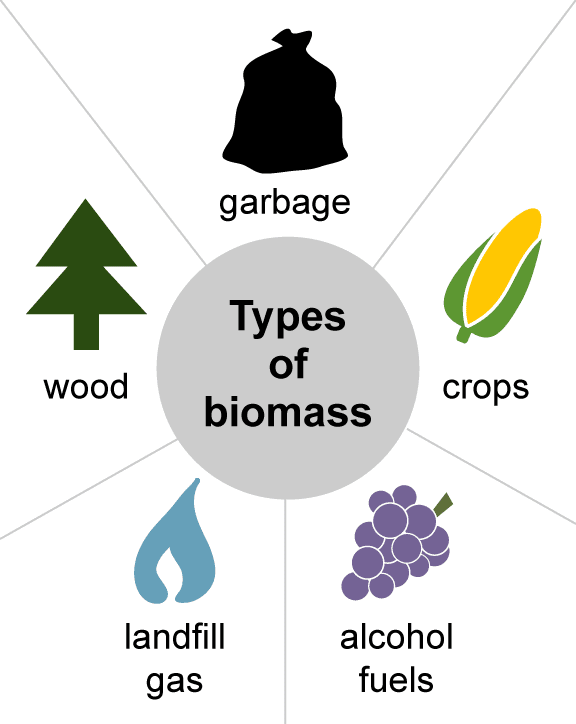Comprising 70 percent of the world’s renewable energy consumption, bioenergy is created using biomass, or feedstock, which is any organic material. It can be used for a slew of different activities including fueling cars and running a power station. According to Corinne Drennan, Energy and Environment Directorate at Pacific Northwest National Laboratory, “Bioenergy accounts for about one-tenth of the world’s total primary energy supply. Primary energy is what is used to make other forms of energy.” Bioenergy is a valuable resource that may play a bigger role in the coming energy transition.
Other renewables may be ill equipped to create heat for industrial processes, but bioenergy has that capability. Wind, solar and other renewables generally create electricity, but there are a number of different technologies to create various kinds of energy from biomass, the main uses for which are thermochemical, and include combustion to make power and heat. However, there is an increase in the use of biomass to produce liquid fuels and biogas for things like transportation.
Feedstock to biofuel has a complex value chain and a broad set of options. Feedstock for biofuel can include: algae, energy crops, municipal solid waste, animal waste, forestry residues and agricultural residues. Using biological, thermal, chemical and mechanical processes, the feedstock is conditioned (improves quality or density), pretreated (isolates intermediates such as carbohydrates, bio oil or lipids), and converted into biofuels. Heat, motion and power can be created from the combustion of gaseous biofuels (H2, syngas, biomethane and biogas), liquid biofuels (alcohols and hydrocarbons), and solid biofuels (wood pellets and charcoal). Each feedstock has multiple routes for processing.

To create bioenergy, feedstock must be conditioned to decrease the level of moisture and size and raise the energy density. Then it is pretreated to break it up into simpler compounds – lipid content and carbohydrates – and converted into biofuel. Hydrolysis takes the feedstock and removes the carbohydrates (sugars) from the lignocellulosic structure which is then fermented to create alcohol. Hydrolysis divides the carbon content among three phases: Biochar is a solid phase, syngas is a gaseous phase which is ready for use or can be fermented, refined or put through the Fischer-Tropsch process (converts a mix of hydrogen and carbon monoxide to liquid hydrocarbons), and pyrolysis oil which is a liquid phase that can be refined to bio jet fuels, biogasoline and renewable diesel. Biogas can be produced from any type of feedstock using anaerobic digestion.
There are vast differences in the maturity of bioenergy products; some are still in the early stages of development and others require supportive changes in policy and technology. Efforts must be made to lower the price of biofuels in order for them to become a viable alternative. During the COVID-19 lockdown in 2020, the price of fossil fuels decreased dramatically, and biofuels just couldn’t compete. However, with the current rise in gas prices, biofuels may become a more attractive option.
Support from regulation is needed to increase efficiency in production, collection and transport of biofuels and biogas which, in turn, will decrease the price. Also, for the use of bioenergy for cooking stoves and heat, progress must be made to mitigate health issues that come with this use, such as air pollutants and indoor flue gases – a combination of combustion byproducts that include acidic gases, heavy metals, particulates, carbon dioxide and water vapor. One place where bioenergy is already competitively priced against fossil fuels and other renewables is in the biomass to power sector.
Bioenergy does have its critics, though. Their biggest qualm tends to cite better uses for land, such as food production or animal habitats, due to food scarcity, and deforestation is a major problem for many ecosystems. The southern part of the world has a tendency to use biomass in an inefficient and unsustainable manner which can have a negative impact on the environment and human health. This can be avoided by using second generation feedstock – non-edible waste and crops, third generation feedstock – macro or micro algae, and fourth generation feedstock – genetically modified crops. These do not produce as much energy as first generation feedstock, but they are more sustainable and decrease the competition with food. In order to appease the critics, bioenergy must produce feedstock in a sustainable manner in which the needs of the economy, society and environment are all equally considered.
Biomass to bioenergy should only be considered for sectors if there are no other alternative renewable options because feedstock supply is limited. Drennan drives this point home by saying, “Bioenergy is not always preferable to other forms of energy. There is debate about the carbon intensity of different biomass feedstocks and their potential to induce land use change. The carbon in bioenergy – like the carbon in fossil energy – should be used prudently and efficiently.”
By 2050, the U.K. could produce 44 percent of its energy from household waste, agricultural residues and other biomass sources. The U.K. already has a well-developed gas grid which could use biogas and wood pellets and chips to get the energy it needs to create heat; this, in turn, would decarbonize this sector. Unlike other renewable energy sources, bioenergy can actually remove carbon dioxide from the atmosphere. This is due to the fact that some feedstock are plants, trees and crops which use carbon dioxide for photosynthesis. Because of this, the Intergovernmental Panel on Climate Change has included huge amounts of bioenergy with carbon capture and storage in their plans to reduce the planet’s temperature by two degrees.
Another reason so much bioenergy is included in the IPCC’s scenarios is that it can be converted, stored and moved in multiple forms, including electricity, liquid, gaseous or solid biofuel because biomass includes a wide range of biomaterial with differing properties and chemical composition. This variety makes decarbonizing “hard-to-abate” end-use applications – sectors where the transition is not so cut and dry due to cost or lack of technology such as heavy transport and industrial processing – a possibility. Utilizing biomass will provide several pathways to decreasing GHG emissions, possibly even by half.

“As we transition to “net zero” economies, the role of bioenergy will become broader,” Drennan says. “Specifically, wastes and biomass materials will be used to make liquid fuels such as renewable diesel and sustainable aviation fuels. These materials will also be used as feedstocks for petrochemicals, such as plastics and other products that make modern life possible.”
Creating bioenergy from biomass utilizes carbon circularity which is a plan for reducing and managing emissions: reduce, reuse, recycle and remove. Bioenergy is carbon neutral because it depends on the already existing carbon cycle of biomass and when combined with carbon, capture, use and storage is even carbon negative.
According to Drennan, “Where bioenergy is preferable to other forms of energy, it is generally due to the renewable nature of bioenergy. The cycle time for fossil energy is millennia, where trees and agricultural residues can be grown on the order of years. The idea here is that carbon dioxide is absorbed by biomass and fixed into the plant. When the carbon dioxide is released by utilizing bioenergy, it can then be re-fixed into a new plant. When carbon dioxide is released by utilizing fossil energy, that carbon comes from deep underground, shifting the earth’s carbon balance from underground up into the atmosphere and increasing greenhouse gases. Bioenergy from wastes has the potential for additional impact. As we collect carbon from waste, we are also cleaning up the waste stream, thereby converting a social, economic and ecological liability into an opportunity and revenue stream.”
By 2060, bioenergy could potentially provide 15 to 30 percent of the global energy demand due to the sustainable potential of biomass. With proper regulation and an environmentally friendly mindset, bioenergy could play a much larger role in how we power the world in the coming years.
Shannon West graduated with a Bachelor of Liberal Arts in Psychology from Texas State University, where she developed a knack for writing research papers and case study analyses. After years of helping friends edit their university papers and cover letters, she is now putting those skills to use by copy editing and writing here at OILWOMAN Magazine.
Oil and gas operations are commonly found in remote locations far from company headquarters. Now, it's possible to monitor pump operations, collate and analyze seismic data, and track employees around the world from almost anywhere. Whether employees are in the office or in the field, the internet and related applications enable a greater multidirectional flow of information – and control – than ever before.



